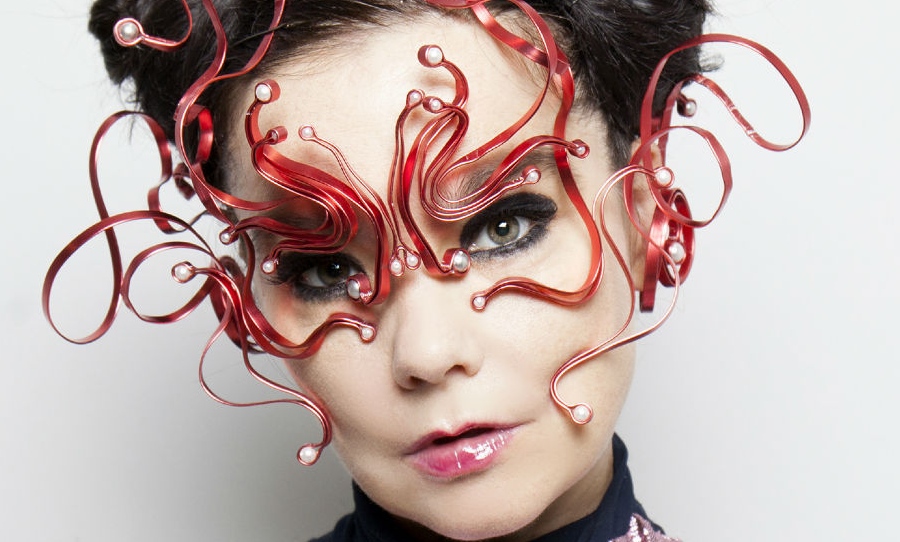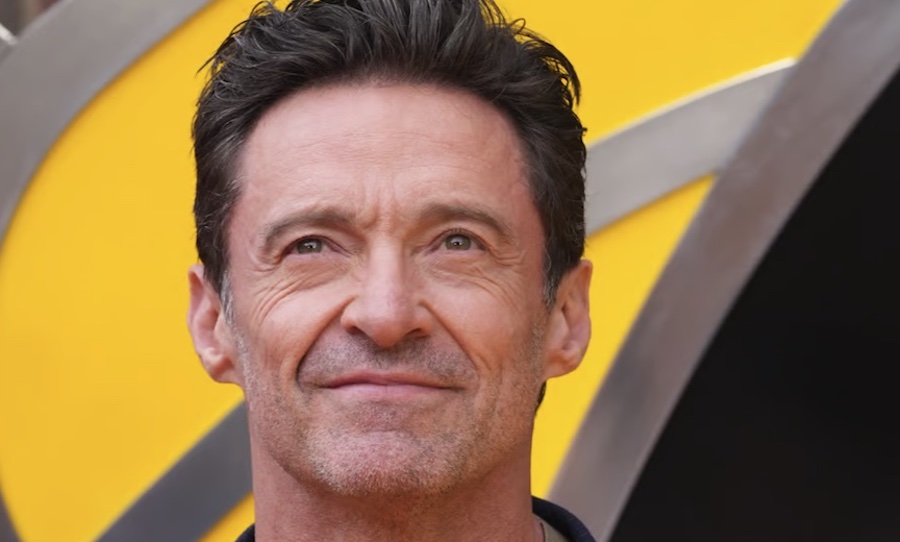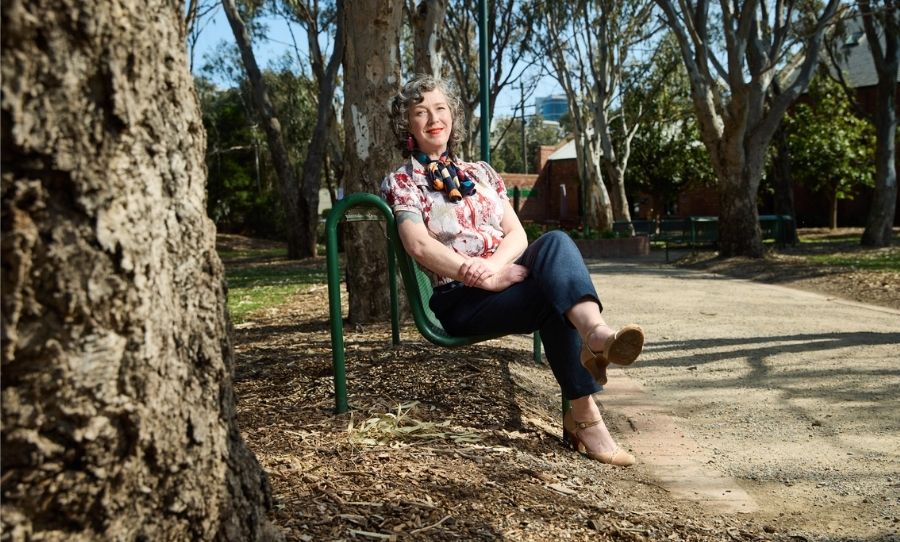Nate Edmondson is a multi-award-winning theatre composer and sound designer whose creative talent and breadth sees him create sonic worlds for the stage.
Sound design and composition, once considered an unobtrusive element to be poured over a scene, is now taking a place at the creative centre of stage shows. With advancements in audio hardware and software skyrocketing in the past two decades, an audio renaissance is on its way to a peak. At the forefront of this revolution in the Sydney theatre scene, is Nate Edmondson. According to reviewers, his music is an alliance between Hans Zimmer and Phillip Glass.
Away from the studio and the stage, Nate is a passionate advocate for recognition and pay rises for fellow industry composers and sound designers, as well as education for those who do not know the demands of the audio sector. Nate has spoken openly about monetary issues in the theatre world that have not only prohibited sound creators but have contributed heavily to gender and racial inequality on and off stage.
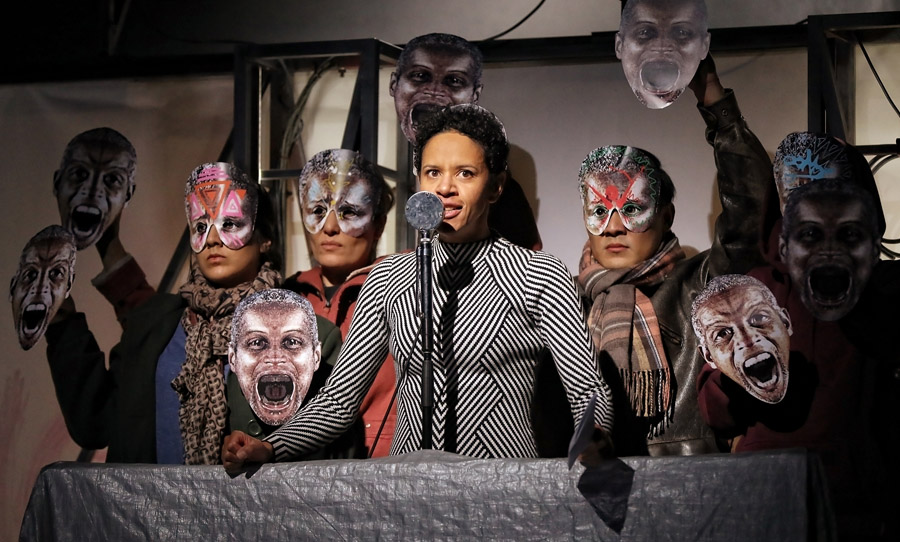 Julius Caesar at Bell Shakespeare. Photo: Prudence Upton
Julius Caesar at Bell Shakespeare. Photo: Prudence Upton
ENMORE AUDIO: You’re a composer, sound designer and musical director working for film, television, radio, advertising and stage, which are quite non-traditional forms of music production — if we are considering traditional music production to be a musician in a studio working on an album. What drew you to this alternative path in audio?
NATE: It kinda happened by accident really. I was living in the UK and I did originally have aspirations to study theatre production over there, but quickly realised that the cost of being an international student was far outside my means as a small-town boy from Perth! So I came back to WA and I actually ended up studying medicine for a year at UWA and then doing an office job and started a band, through which I was doing a lot of arranging and I was writing and scoring. We were sort of an indie-folk band — I suppose it was more of a small orchestra or ensemble than it was a traditional band — so there were a lot of non-traditional instruments and method that I started out with.
My background was as a musician, so I already had the musical foundation. But I found myself thinking one day “it’s time to do something.”
I had deferred my medical degree at that point, and I was trying to figure out where I wanted to go next. So I applied for the National Institue of Dramatic Art (NIDA), for the production course. So I was like “I’ll just have a crack” — because at that stage it had been so long since I had even been in a theatre to watch a show. I figured it would be a chance to see what would be required of me in a theatre setting, and next year I would go back and properly apply for places like Western Australia Academy of Performing Arts (WAAPA) and other performing academies. So I did that. I went through the process, and they said exactly what I hoped they would say which was: “Great application, come back next year and we reckon you’ll have a really good chance.” Which was exactly my plan.
So I went back to my life as normal and I got a call one day in February 2009 and it was NIDA saying:
“Someone hasn’t shown up on Day 1, it’s now the end of the first week of the course. If you can decide, within 24 hours and move to Sydney within a week, then the position is yours.”
And I almost said no, because my band was doing quite well at that point and we had places we were going to go. But then I thought, “What if this doesn’t happen again?” So I said yes. I jumped on a plane and somehow managed to start NIDA within a week.
I sort of knew I would be drawn to the audio side because of my background in music. But it didn’t even occur to me at that stage that being a composer for theatre was an option. It wasn’t a thing, there weren’t that many around back then. It wasn’t something that was really advertised, or that you’d hear much about. Everyone really knows about the major roles: actors, directors, writers etc. And I kinda knew about the behind the scenes trades, but it never occurred to me that I could combine my previous skills as a musician with the new skills I was learning as an audio designer and engineer into what I do now.
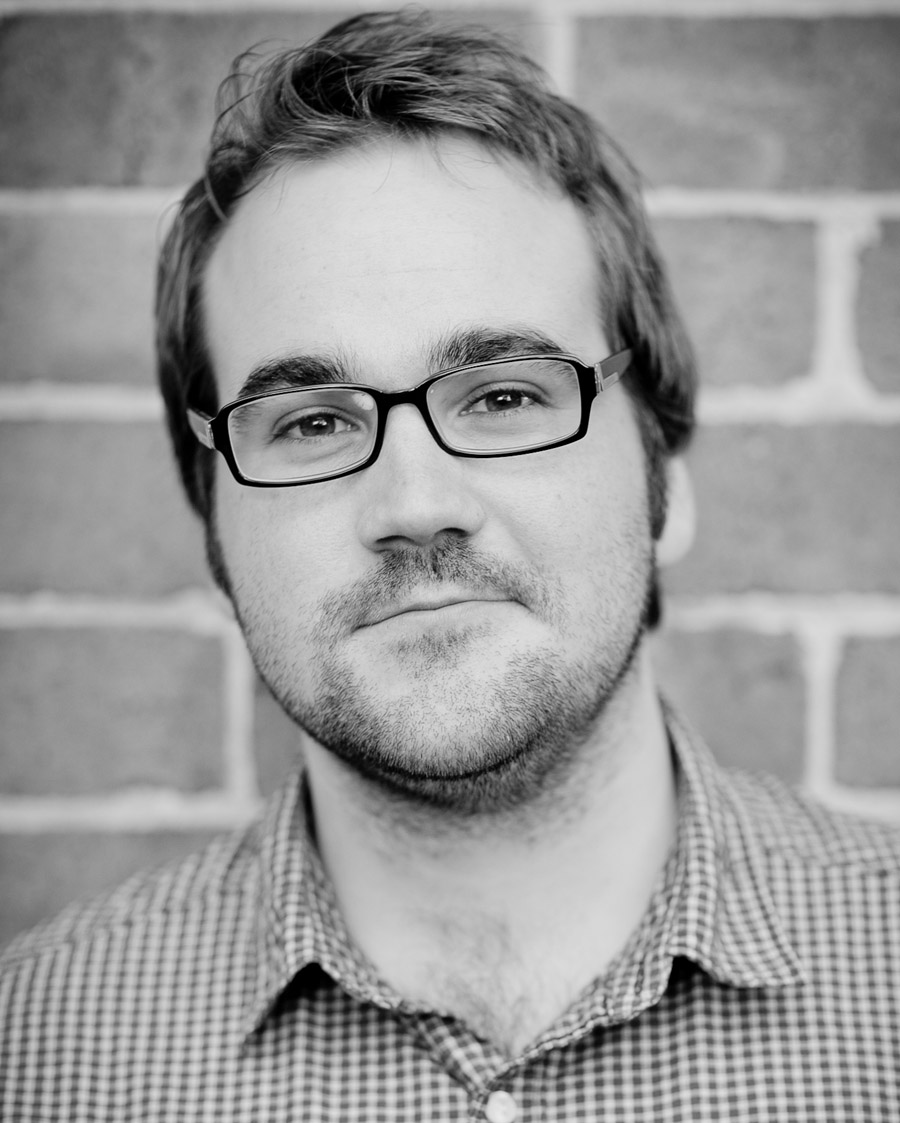
ENMORE AUDIO: How did the rise in accessible audio technology influence your career and the theatre industry as a whole?
NATE: It became obvious very quickly that there was a demand for audio designers because at the same time the industry was undergoing a technical renaissance.
We had the advent of affordable, portable audio production gear that was sort of driven by that ‘bedroom musician‘ industry — think bands like Beirut — that had sparked up in the early 2000s. So that had suddenly opened up this whole new avenue for theatre to be able to explore more complex ideas of sound design and music production.
I was riding the crest of that revolution. We had begun with two stack CDs where you — which you had access to if you were lucky enough to work at a large subsidised theatre company — where you could have about 4-6 individual elements playing at any given time.
Suddenly, QLab was released, and you could have 4-600 elements if you so desired. QLab was actually designed by a bunch of software developers that were at uni, and their friends in the theatre society were like: “Hey we are sick of using CD players can you help us out”. They came up with this program, released it for free and now it’s globally become the industry standard. So that’s really opened up the possibilities, probably more than any single element that’s come along.
Very quickly after QLab was released, I started getting a lot of work and offers, which begun in the independent sector and then moved into the main stage subsidised world.
Good with Maps at Siren Theatre Co
I remember thinking at the time, whose shoes am I filling? Had someone retired? Or moved up in the world or something, because there were so many gigs going! But when I started looking at audio websites, and blogs and reviews, I learned it wasn’t that someone had moved up or moved on, there just weren’t that many composers or sound designers.
If someone wanted basic sound design they would often outsource it to to the technical manager or in-house audio team. The director would rock up with a pile of CDs and say “I want this track for this transition and that track for that transition.”
It was only occasionally that larger subsidised companies would actually fork out for a proper composer for a dance show or a big Shakespeare. But now we had portable, more affordable smaller scale interfaces and software to go along with it. Because theatre doesn’t have a lot of money, and it can’t quickly pivot into just any new technology, at least in this country with our levels of funding. So the new technology just made that avenue affordable.
I also realised I was quite lucky in my timing. It all happened without me really intending for any of it to happen. I was in the midst of that revolution.
Lighting had its revolution back in the ’70s with touring rock concerts and Pink Floyd. That helped create the advent of digital, intelligent lighting. Lighting has had decades to become theatre standard, whereas audio technology is still catching up.
I’ve done a lot of advocacy work in the past few years about trying to improve resources, timelines, conditions and understanding what the role of a sound designer and composer is now because it’s so different. A lot of producers and companies have that old idea of it in their head.
ENMORE AUDIO: There is a distinct difference between sound design and composing for theatre. Could you highlight how the two are unique?
NATE: There is a sort of grey area between the two departments, but broadly speaking the sound designers are in charge of the overall sonic experience the audience is having the moment they step into the auditorium. So you’re responsible for any playback sound effects — in theatre, it’s often ambiences, birdsong, thunderstorms — any of those naturalistic effects, but also any of the abstract effects. That might be tonal drones or little accents or booms — the sort of semi-musical elements that can be woven into the sound design.
Rust and Bone at Griffin Theatre Co
A sound designer will handle any non-original music, anything being sourced via APRA, any existing recordings. Any editing or use of that will be the sound designer’s domain. They’re also responsible for the sound system design. So that could be deciding where you hang your speakers, considering factors such as whether there a microphones or not.
Whereas a composer is solely responsible for any original music.
But there is a lot of grey area of course. As a composer, your music ultimately has to be programmed, plotted and mixed within QLab or whatever software you’re using, which is the role of the sound designer. So you do have to collaborate very closely there. There’s also a lot of overlap when dealing with things like drones and texture, or things that have tone or that have emotional weight but don’t have lyricism and are not overtly melodic.
A really good collaboration between a sound designer and a composer will utilise a lot of that crossover, and they will contribute to each other’s worlds a little bit. It’s rare that you have a composer that just does their thing and disengages from the process entirely.
ENMORE AUDIO: You were nominated for a Helpmann Award in 2019 for Best Sound Design for The Harp In The South, which was huge! Congratulations.
NATE: Cheers!
ENMORE AUDIO: That was a massive show. It was six and a half hour epic that was split into two parts. I read a lot of reviews of the play, and they really complimented your sound design. They said you combined the old with the new, the real with the abstract and you seamlessly moved the audiences from the 1920s all the way to the 1950s. What’s your process to ensure your sound design is working in conjunction with narrative to enhance theatre stories?
NATE: I’ve always approached it very filmically I suppose, whether I’m sound designing or composing I’ll start from a cinematic angle.
Obviously, you always start with the text. In the case of sound design, unlike composition, you have much more scripted content that’s given to you by the playwright.
Then you look at pre-production, where you start collaborating with the design team and the director to figure out what they are doing with the plot. Are we doing a naturalistic treatment, or something really abstract? Because sometimes it’s not clear cut. I’ve done naturalistic plays that have been given an incredibly abstract treatment on stage that you wouldn’t pre-empt if you were just handed the script.
 The Harp in the South at Sydney Theatre Company. Photo: Daniel Boud
The Harp in the South at Sydney Theatre Company. Photo: Daniel Boud
With that in mind, I then look at the geography of the space. Where is the audience meant to be sitting when we don’t want them to just be in a theatre? That’s the beauty of modern sound design. You have the ability to put the audience inside of the music, inside of the sound. It’s no longer limited to being a front on stereo image. You’re thinking about the geography and going: “Is this place in a park? Ok, there are trees, is there going to be wind in the trees? Therefore do I want a speaker up in the grid that can reflect the origin of that particular sound, and mix the sound of the leaves blowing in the wind into there?”
So there are those really obvious elements, but the next level is looking at all the abstract elements. And a lot of that is about trying to tie together the production design. Sound and music, that’s the department that has the greatest ability to connect the dots on all the other design components.
ENMORE AUDIO: Do you find yourself collaborating and connecting with other creative departments and storytellers to enhance a show?
NATE: Absolutely. One of my first STC shows was Romeo and Juliet and we had a giant revolving stage with this huge house on it. So rather than just watching this thing move, we threw a sound on it. So when this revolve happened it had this big rumble to reflect the weight. Obviously, it was not a real house, it was just a set of flats. But the sound suddenly gives it dynamic, it gives it the sense of presence and weight that the actual real-life staging doesn’t allow you to do.
Sound has the ability to animate, to give something purpose, to make it feel like it’s deliberate and is interlinked with all those other departments, not just something that’s out on its own. So yeah, that’s a big thing I look for: how can I add that detail to other departments and other elements of the staging?
ENMORE AUDIO: With all the technology we now have, practitioners want more immersive and complex sonic soundscapes that are actually enhancing the narrative. What unique challenges and demands do you face to achieve this?
NATE: A lot happens in the rehearsal room. Once you’ve got your cast, you need to listen to their natural rhythm. It’s important to hear that in the actors because it’s not necessarily what’s on the page. It’s their interpretation of the script, and it can really influence your approach because you don’t want to throw something off. I do a lot of kids shows. So things like The Very Hungry Caterpillar Show, it’s got a very gentle rhythm. It’s not a naturalistic kitchen drama, it’s something for children. So sensing those natural flows are particularly important.
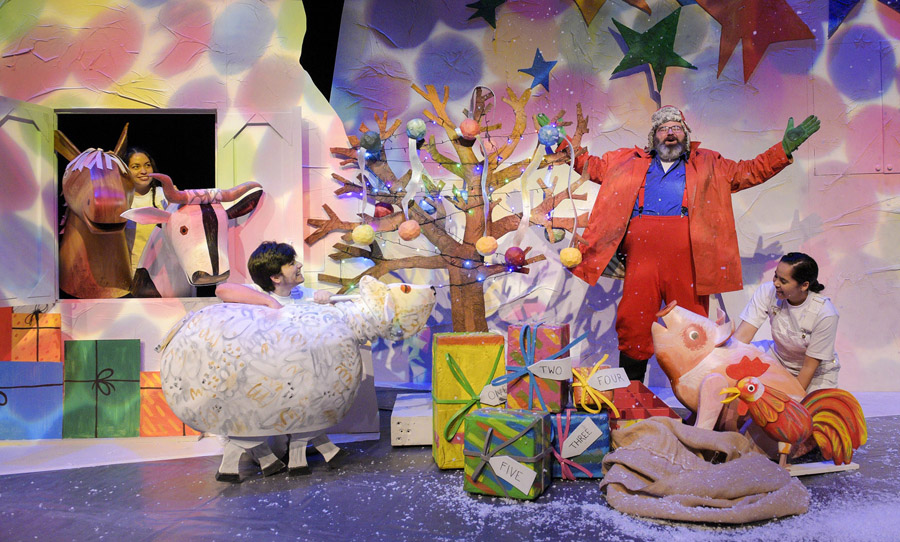 The Very Hungry Caterpillar Show: Dream Snow at Rockerfeller Productions.
The Very Hungry Caterpillar Show: Dream Snow at Rockerfeller Productions.
I often record the actors as soon as we start putting scenes together. Then I work on it as you would on a film project: drop the recording into your editing software and start to match to those timings and work to that imagery. I do that because one of the challenges of sound and composition for theatre is that you’re expected to be in the room all the time. It’s really hard to write music and create audio content when you’re also trying to listen to everything going on around you. It’s not the most conducive environment for that.
When you’re in the theatre the final layer is just detailing and working with the space to figure out all of its quirks. And it does get quite complex, it’s harder to do when you’re splitting the role of sound designer and composer. As the sound designer, you’re the point that everything converges on. So you have to simultaneously be managing the composer and what they’re asking for, you’ve got your own material, you’re doing all the QLab programming yourself, you’re also communicating back to the mixing desk to suit the director’s requests. So you have to really be on your toes, juggling the communication between all these different layers of the production.
ENMORE AUDIO: Finally, I would love to talk about your advocacy work for sound designers in Australia. Especially your reaction to David White’s open letter to the film industry about the way sound designers are treated. In your response, you said that sound designers are the lowest paid of all theatre creatives even though they do the work of what would be three or four people in any other equivalent departments. You’ve spoken about the poor recognition and support sound designers receive, despite their intensive hours and the creative and technical breadth of their work. You made this post in 2019. As we are seeing sound design becoming more important, has any of this changed?
NATE: Yes and no. Conversations were being had, producers were listening. It was feeling positive.
Then COVID happened.
The problem with all these things is that, for us, it’s a conceptual, really obvious moral argument of “this is how much work we do, therefore this is how much we should be paid and the support we need”. For the theatre company, that’s all well and good, but ultimately it translates to how much extra money needs to be spent to achieve that. And the moment something like COVID comes along, it throws all that out.
For theatre companies to enact the kind of changes that need to happen, realistically it’s a 3-5 year period minimum that they would require to slowly shift the finances around. And that’s the minimum. The theatre world is not a world that moves particularly fast, unfortunately, despite how fast the technology and the demands around it have moved.
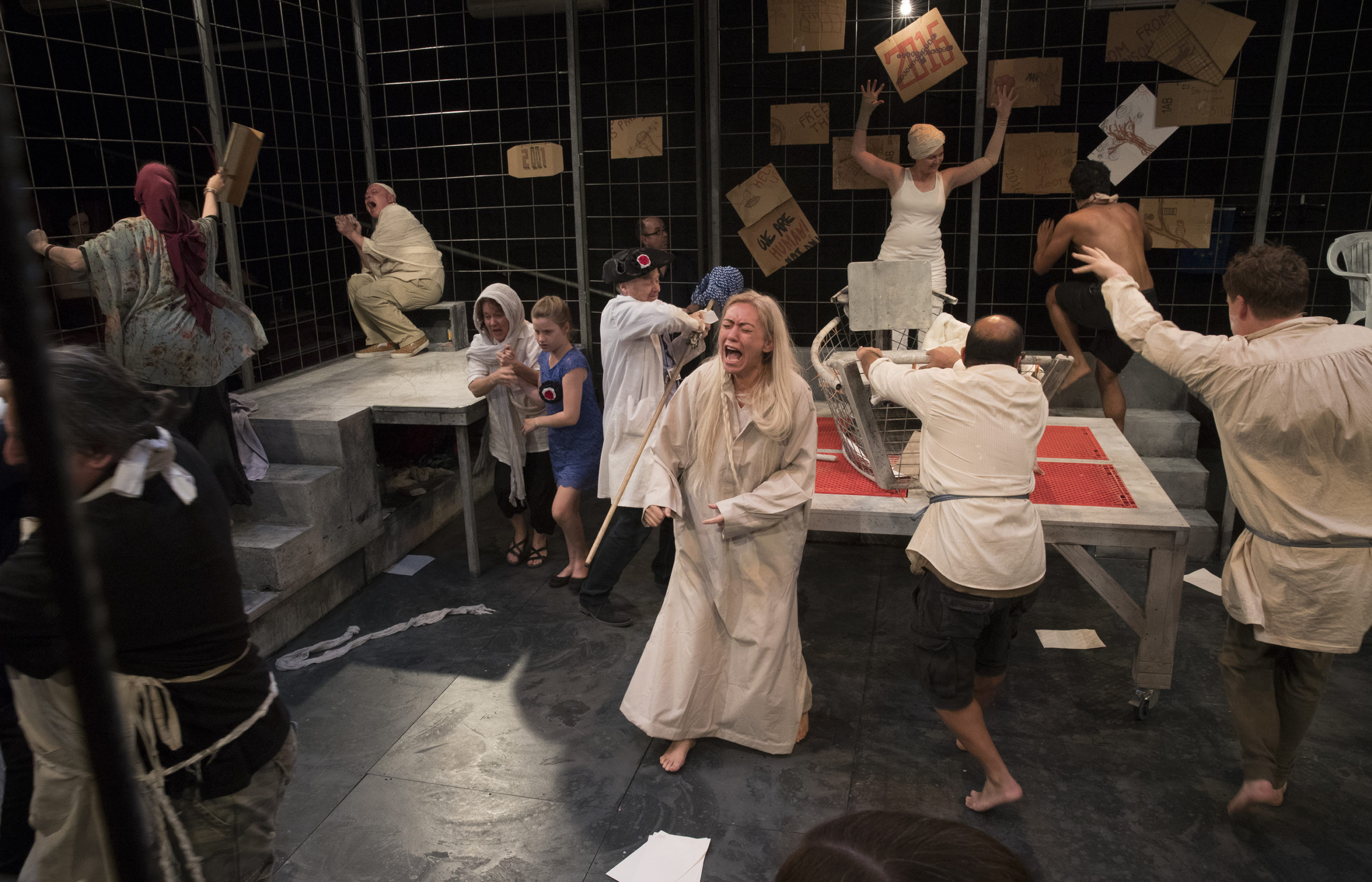 Marat/Sade at New Theatre. Photo: Bob Seary
Marat/Sade at New Theatre. Photo: Bob Seary
There was a positive change, but it’s been set back a decent amount with COVID. In the meantime, we’ve had all these other incredible social movements come through the theatre industry: proper mental health care, diversity — all those issues are kind of wrapped up in what we are advocating for anyway. So I hope our work is helped along by those other social movements and vice versa, they intercept a lot.
ENMORE AUDIO: How can we start a dialogue about this?
NATE: I encourage anyone, any student I teach or fellow creatives I chat to, to start talking about money. Even if your contract says don’t talk about money. It’s where all the secrets lie.
In the UK, there’s the ‘I’ll show you mine’ movement. That laid bare so much, not just about these problems that we are advocating for in terms of composers and sound designers, but it also laid bare the gender inequality, the lack of diversity, all of these other issues. It all comes down to the money at the end of the day.
I think if people can feel a little more empowered to talk about money with each other. To ask questions. If you’re a young composer or sound designer getting your first gig with STC for example, don’t feel afraid to reach out to someone who’s done that role already and ask what you should be getting. And if you’re not getting that, don’t be afraid to push for it.
With all these social movements that have been happening it’s really encouraging to see that change being driven, but a lot of it is very top-down. It’s theatre companies going “we will put more people in these roles”, but they aren’t then going back to the training academies and making sure they have systems in place to attract people of different backgrounds to go into these roles. So a lot of it runs a risk of being a very temporary bandaid for the problem. It needs to be a double-headed attack.
The reality is, if you look around the theatre industry — if I had to hazard a guess — I would say at least two-thirds of the industry would come from what a standard person would call a particularly wealthy, privileged background. This is particularly prevalent for composers and sound designers because you need so much capital to even start being productive and competitive in the industry: you need a good set of headphones, hard drives, VST libraries, DAW software, a QLab license, a good laptop — that’s all the stuff just to even start out. You’re talking over $10k of equipment. But there aren’t any grants or funds available in the same way writers get writing development grants, for example. Most of our funding models in Australia are project led. So if you’re someone who creates their own work, then you need to invest in your own business, in your own capital and there’s no help for that.
People who come from a background where their parents can help them invest in that kind of equipment have a huge advantage. I have benefited from a degree of that myself. I don’t come from a particularly wealthy background nor would I say I come from a poor background. The fact that my parents were able to help me buy a good set of headphones back when I was at NIDA, even little things like that are such big boosts, compared to someone who would be looking at saving up for — well if they’re on Centrelink in Sydney — saving up for at least a year of their life.
Money is the one form of influence that links all of those other issues together. I hope that starts to be examined a little more, and the theatre kind of can generally find a way to shift back to … you know we used to have ‘blue collar’ theatre in Australia. It’s gone now.
For more information on Nate Edmondson, including his full list of credits, head over to his website.

